After all, you’re a creative person. It’s one of the reasons why you chose to pursue this profession.
Maybe it shouldn’t be surprising that writing about the same topics over and over and over again is starting to feel mind-numbing.
You want to challenge yourself, learn new skills, and reach new heights. But how can you make a career transition without sacrificing all the positive aspects of freelance writing?
Today we are going to explore a career path that might make sense to you – content marketing.
We’ll look at:
- Pros and cons of becoming a content marketer.
- Various content marketing statistics.
- The best way to get your first content marketing client.
Sounds interesting? Let’s continue.
Why Become a Content Marketer?
Before we get into content marketing statistics, let’s look at the cons and pros of becoming a content marketer. What are the trade-offs?
Pros of Becoming a Content Marketer
1. More Creative Freedom
As a content marketer, you’re responsible for developing a content strategy, not just for content creation.
That means that you have more creative freedom to try new things, experiment with various approaches, and take risks.
2. Wider Skill Set
As a freelance writer, all you need to know is how to produce great written content. But as a content marketer, you might need to also become proficient at other modes of content creation (producing visual content, video content, etc.).
Moreover, you’ll need to master marketing, which means studying its general principles, learning to build sales funnels, learning to drive traffic, and so on.
The need to acquire these skills presents new challenges that will keep your mind engaged.
Plus, a wider skill set like that can also help you with your own future projects.
Say, if you ever decide to write a book, then having marketing chops might help you sell more copies (e.g. Taylor Pearson used his marketing skills to sell 5,000+ copies of his first book in one month).
3. Better Pay
Since content marketing requires a wider skill set than content creation, content marketers typically make more money than content writers, assuming that they’re at the same level in their respective careers.
According to Salary.com, the average freelance content writer salary in the United States is $53,440, with the typical range being between $44,218 and $61,373.
Meanwhile, the average content marketer salary is $55,354, with the typical range being between $44,974 and $67,485.
This might not seem like a significant difference at first glance, but the upper typical range limit is $6,112 higher for content marketers. An extra $6k a year is nothing to scoff at!
Moreover, if you go freelance instead of getting a full-time job as a content marketer, you might be able to make more than that. Successful content marketers can make six figures as long as they can produce results for their clients.
4. An Opportunity to Build a Business
Freelancers often use the term “business” to refer to what they do, but in reality, freelancing is not a business. It’s a career. Why?
Because as a freelance writer, you’re trading your time for money, not building an asset that you can later sell.
Of course, as a content marketer, you’ll also have to start by trading your time for money, but once you gain momentum, you can expand from a one-man or a one-woman show to a content agency.
Outsourcing content creation would allow you to serve more clients, take on larger projects, and make more money. It would drastically increase your income potential.
Moreover, suppose you can extricate yourself from the day-to-day of running your content marketing agency. In that case, you’ll also have an option to sell it should you ever decide that you want to do something entirely different with your life.
Cons of Becoming a Content Marketer
1. More Responsibility
The creative freedom that we just discussed comes with increased responsibility.
As a freelance writer, your job is to produce content that meets the client’s standards. But as a content marketer, your job is to create and execute an effective content marketing strategy that delivers a satisfactory return on investment (ROI).
Prepare to have your content marketing efforts scrutinized with metrics such as traffic, conversion rates, sales, revenue, and profit.
2. Less Flexibility
While you can retain location independence as a content marketer, your schedule will likely be much less flexible, especially when taking time off.
As a freelance writer, if you have to produce four articles per month for a client, you might be able to take three months off if you can cover that period by providing 12 articles in advance.
However, as a content marketer, you need to track metrics to adjust your content marketing strategy accordingly. You can’t just put content marketing on autopilot.
It means that you probably won’t be able to take extended time off beyond regular vacations until you not only build a content agency but also completely replace yourself by hiring someone else to run it.
3. Managing People
As a content marketer, you’ll likely need to manage other people, which can be an absolute nightmare until you get the hang of it.
Even as a freelance content marketer, you might need to outsource specific content creation tasks such as creating visual content, editing videos.
And as a content marketing agency owner, you’ll need to build and manage an entire team.
You should ask yourself if you want to handle posting job ads, sifting through applications, interviewing people, training new hires, managing your team, and firing those who do not perform as well as you hoped they would.
Moreover, it’s also important to consider that you’ll likely work primarily with creative people, which isn’t a demographic known for being punctual and organized. That can make managing them extra stressful.
In Short
A career transition from a freelance writer to a content marketer can be lucrative, but you should also expect to experience more stress because of the increased responsibility.
Now let’s take a look at content marketing statistics.
Content Marketing Statistics: Industry
Let’s begin with an overview of the content marketing industry as a whole so that you would know the lay of the land so to speak.
According to HubSpot’s “Not Another State of Marketing 2024” report, 82% of respondents said that their companies were actively using content marketing.
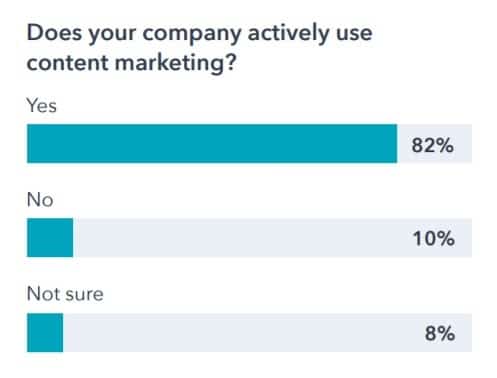
In 2020, an analysis of content marketing-related job postings in the United States had shown that the skill that was most in demand was strategy, which was mentioned in 60% of job postings.
The second most sought-after skill was social media, mentioned in 53% of job postings.
Search engine optimization, also known as SEO, mentioned in 41% of job postings, making it the third most sought-after skill in this industry.
Meanwhile, data from 2019 indicates that content marketing budgets vary wildly.
46% of respondents said that their organizations spent up to $10,000 on it. However, 3% of respondents reported that their content marketing budget ranged from $500,000 to $5 million.
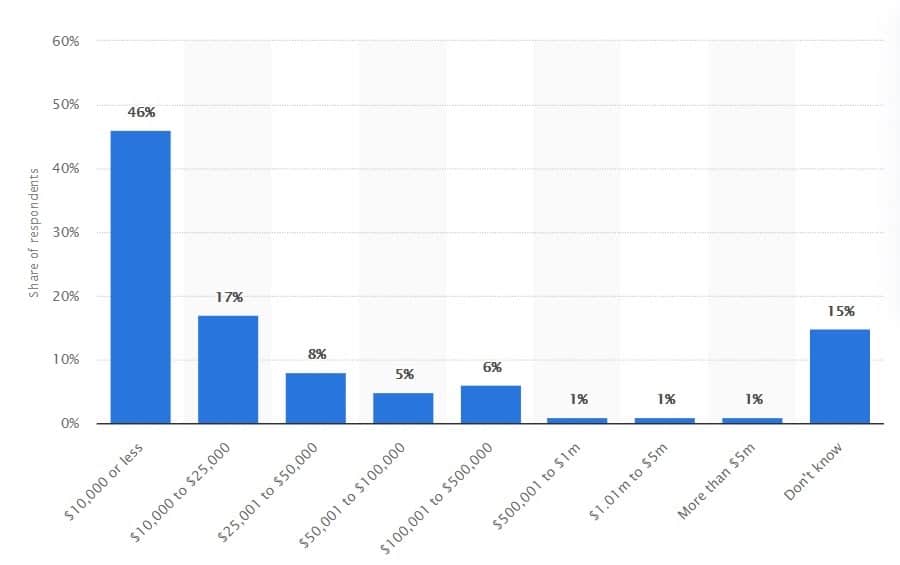
Note that this data comes from a global study, which might explain why 46% of companies spent so little on content marketing.
In many countries across the globe, being able to spend up to $10,000 on content marketing means that you have a solid marketing budget, even if that’s not necessarily the case in the United States.
It’s also curious that 15% of marketers didn’t know how much their companies have spent on content marketing, which presumably indicates that they weren’t the ones managing the marketing budget in those organizations.
Overall, these content marketing stats seem to suggest that the content marketing industry is doing well, which is a trend that’s likely to continue in the foreseeable future.
Content Marketing Statistics: Strategy
Now let’s look at the content marketing statistics related to content strategy. How do businesses use content marketing to promote their products and services?
According to HubSpot’s “Not Another State of Marketing 2020” report, roughly 60% of marketers said that content marketing strategy was “very important” or “extremely important” for their company’s overall marketing strategy.
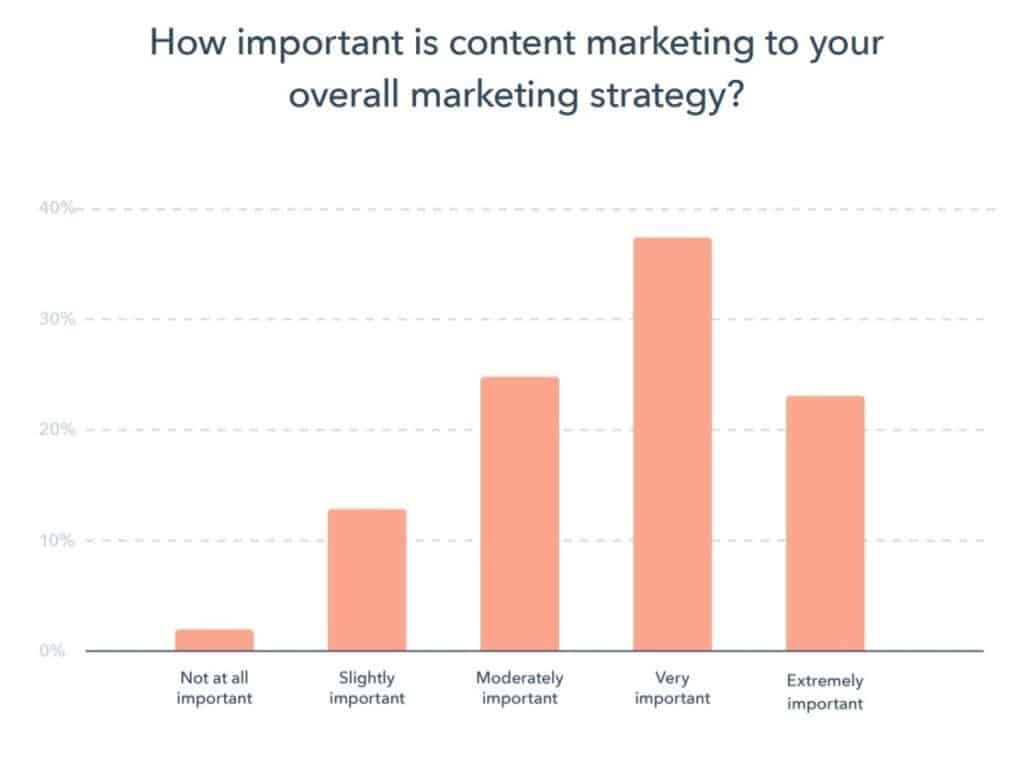
The majority of marketers were creating content for more than one audience segment.
The above indicates that a straightforward approach to creating content with just one customer persona in mind might not be the best content marketing strategy.
You might need to create several customer personas that represent the main segments of your client’s target audience, then make sure that each piece of content that you publish is tailored to one of those personas. This content marketing strategy is likely to work better.
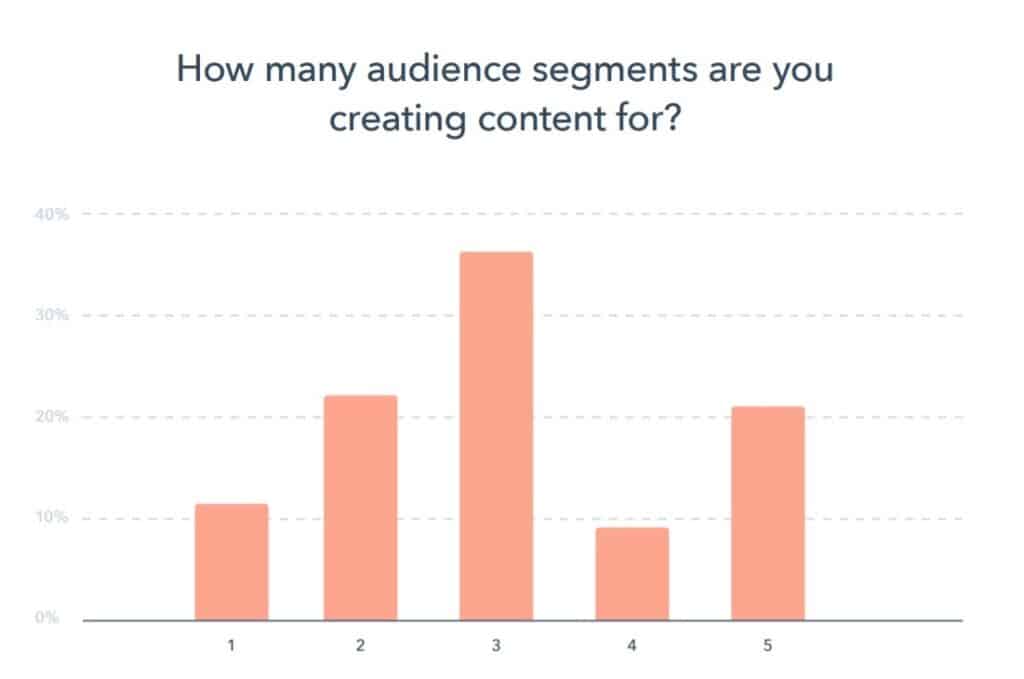
The five most popular content marketing channels were:
- Facebook.
- Company website.
- Instagram.
- YouTube.
- LinkedIn.
It’s probably safe to say that these content marketing channels should be the foundation of your content marketing strategy. That’s what you should focus your content marketing efforts on.
Keep in mind that the Lindy Effect applies to content marketing. The longer the platform has been around, the more likely it will remain relevant in the foreseeable future.
There’s always some new hot platform that everyone’s talking about. And it might be worthwhile to try it for yourself. But never base your content marketing strategy on an unproven platform that might be here one moment and gone the next.
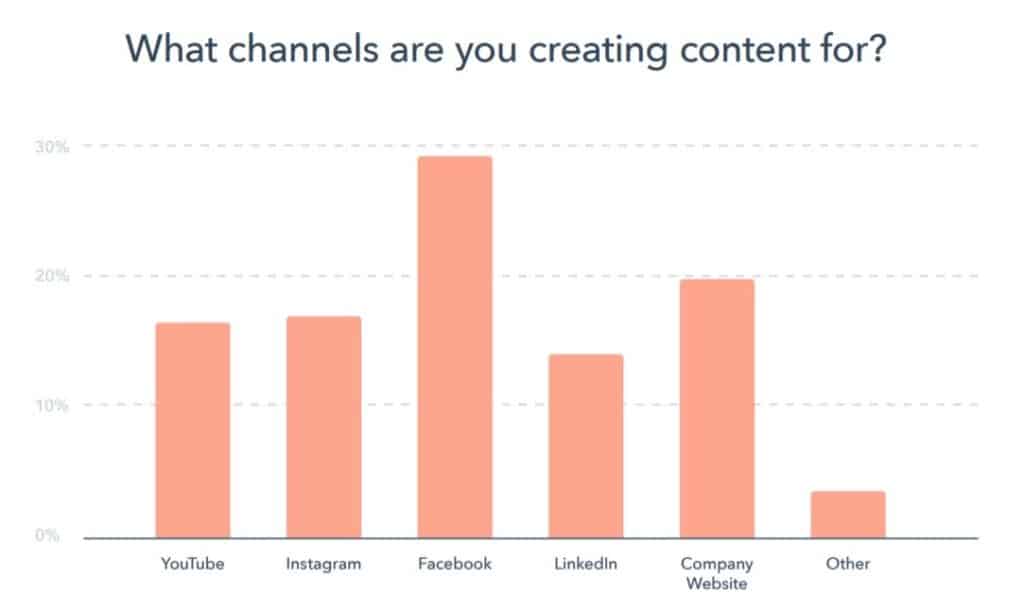
Meanwhile, most of the content used in content marketing is written content, which is excellent news for you since you already have the skills to create it.
However, the most popular type of content is video, so you might want to familiarize yourself with that medium as well.
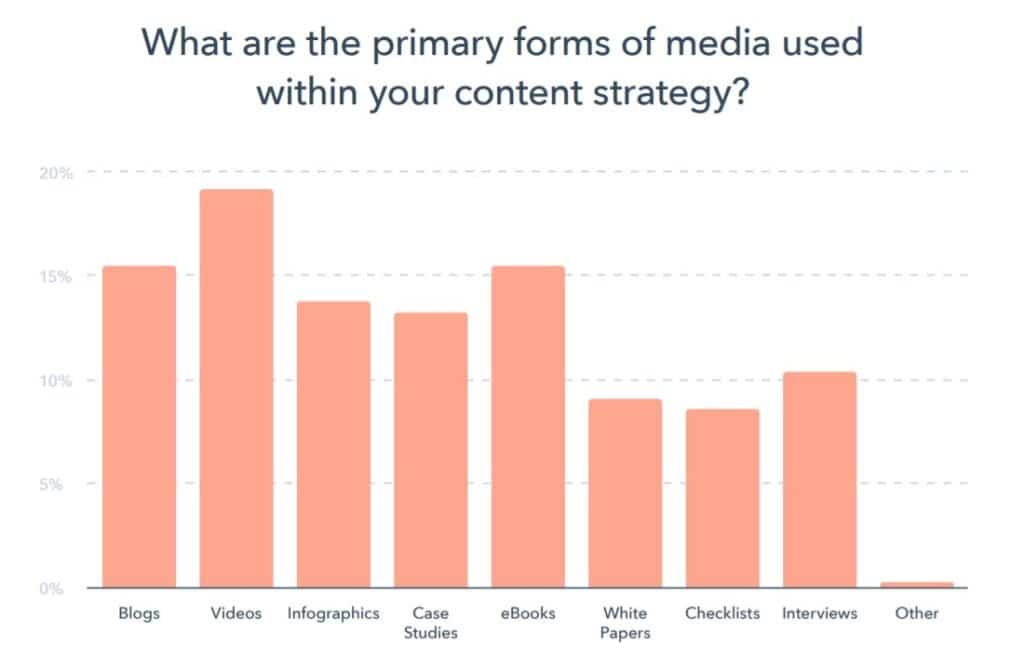
Marketers reported tracking a variety of content marketing metrics, the most important of them being:
- Website traffic.
- Social media engagement.
- Engagement time.
- Email engagement.
- Email subscribers.

And how did marketers measure the success of their content marketing strategy? The most popular metric for that was sales.
However, most marketers used other metrics instead, from web traffic to lead generation to the abstract “SEO success.”
It’s probably safe to say that you can stand out from the crowd by measuring the success of your content marketing strategy by its impact on the client’s bottom line.
Clients may not always understand content marketing terms such as “engagement,” but you can be sure that they know what the words “sales,” “revenue,” and “profit” mean.
So instead of discussing what ultimately are vanity metrics, focus on what your clients care about – money. Make the positive ROI of your content marketing efforts crystal clear to them.
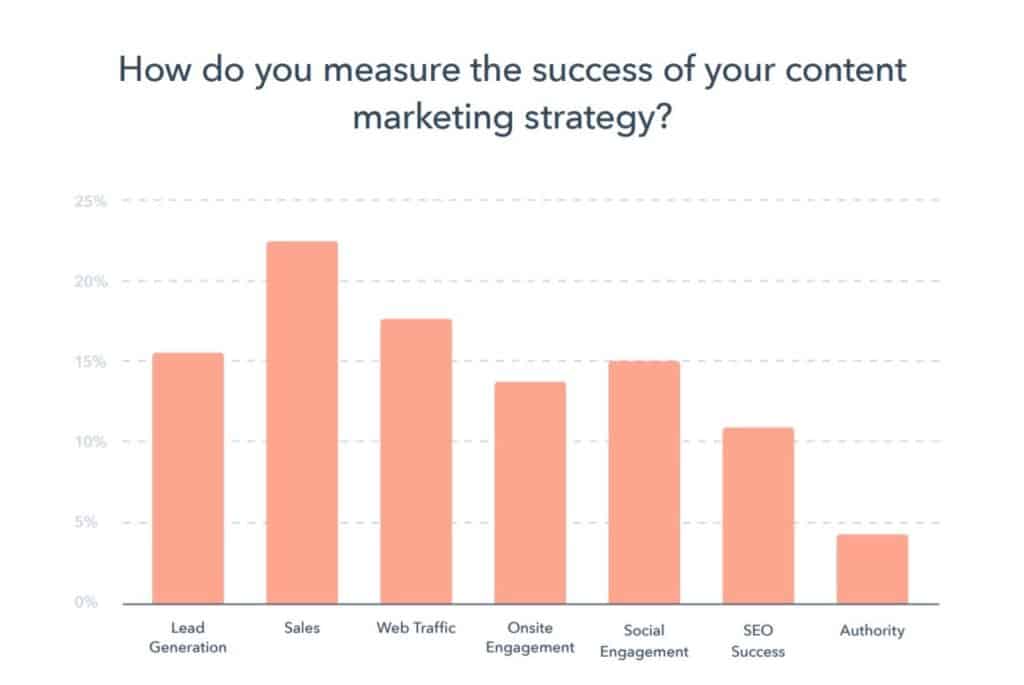
Content Marketing Statistics: Social Media Marketing
Now let’s take a look at the content marketing stats related to social media marketing. How are businesses leveraging various social media platforms?
According to HubSpot’s “Not Another State of Marketing 2021” report, social media is the #1 marketing channel this year, with 8 in 10 companies investing in it.
Meanwhile, according to Sprout Social’s “The 2021 Content Benchmarks” report, when asked what was their primary goal when it came to social media, 58% of marketers said that it was increasing brand awareness.
This is understandable since social media helps businesses reach people who might not have heard about them otherwise. However, brand awareness is an abstract concept, so it’s probably not the best way to measure the success of your social media marketing strategy.
HubSpot’s research has shown that the three main resources required to achieve social marketing goals were:
- Budget (37%)
- Market research (34%)
- Audience research (32%)
According to the same research, the top five social media platforms used by marketers were:
- Instagram.
- Facebook.
- Twitter.
- YouTube.
- LinkedIn.
It seems that Instagram is the primary content distribution channel as far as social media marketing goes.

This isn’t surprising given that these same platforms also produce the highest ROI:
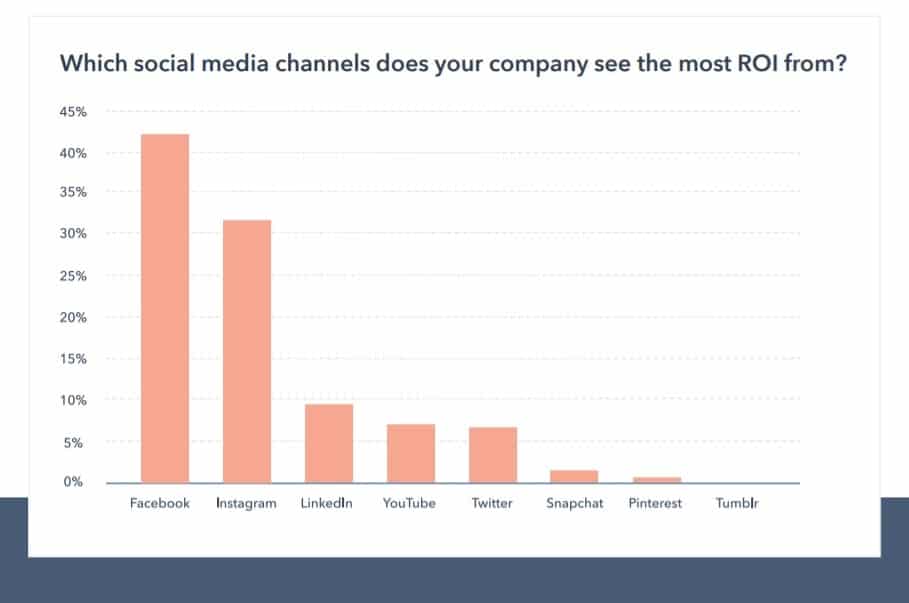
HubSpot also found that the three most popular social media marketing tactics this year were:
- Social listening (62%)
- Hashtags (48%)
- Live video (46%)
Interestingly, 19% of marketers were using augmented reality, so you might want to look into this trend.
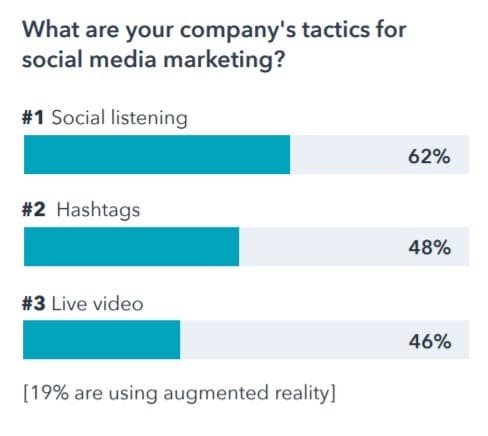
Meanwhile, according to Sprout Social, brands produced an average of 11 posts per day across all their social media channels.
However, there was a significant variance in publishing frequency depending on the industry.
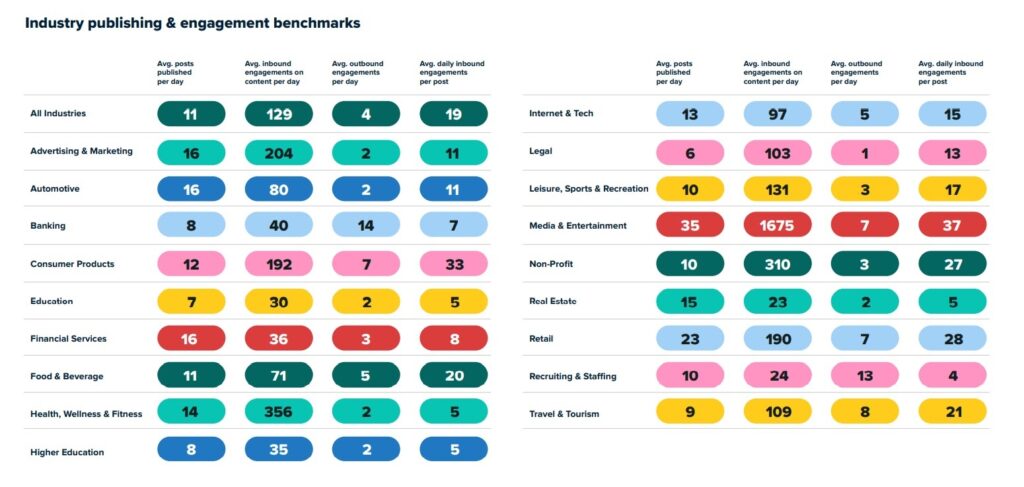
The same research has shown that marketers primarily post images on Facebook, Instagram, and Twitter.
Visual content should be an essential part of any content strategy that involves social media marketing.
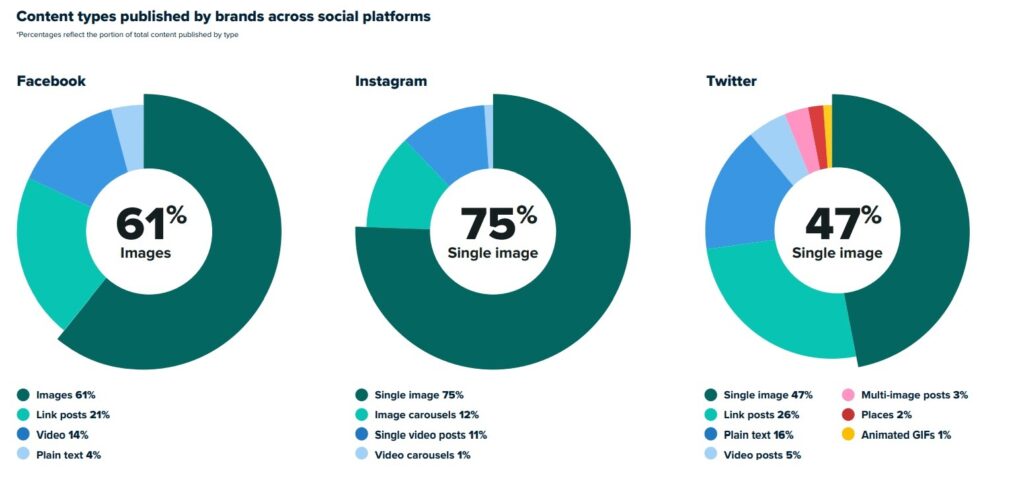
It’s worth noting that the transition from freelance writing to social media marketing might not be as easy as one might expect.
We all have experience posting content on social media, but personal social media usage and social media marketing are two entirely different things. You shouldn’t expect that experience with the former will automatically translate into proficiency at the latter.
As a writer, you’ll likely have an advantage on text-driven social networks such as Twitter, so you might want to look into how to make the most of it.
But remember that even on Twitter, visual content is essential, not to mention other social networks that are more image-driven.
It means that you might need to learn new skills to consistently produce visual content that resonates with your client’s target audience.
Also, whatever platform you decide to target, look up the content marketing stats for it so that you would have a better understanding as to what works and what doesn’t work on it. That will help you develop an effective content strategy.
By the way, marketers reuse content all the time, so when it comes to written content, you don’t need to come up with something unique for every social media post – you can simply reuse quotes from your blog posts.
Content Marketing Statistics: SEO
SEO stands for search engine optimization. It’s arguably the most popular form of inbound marketing.
It primarily consists of creating written content designed to rank on Google for specific keywords, then building backlinks to that content to rank for those keywords. The purpose is to generate organic search traffic.
In theory, you could use SEO to target any search engine, but in practice, no one cares about search engines other than Google. Why?
Because Google completely dominates the global search market, its share being 86.64% this year.
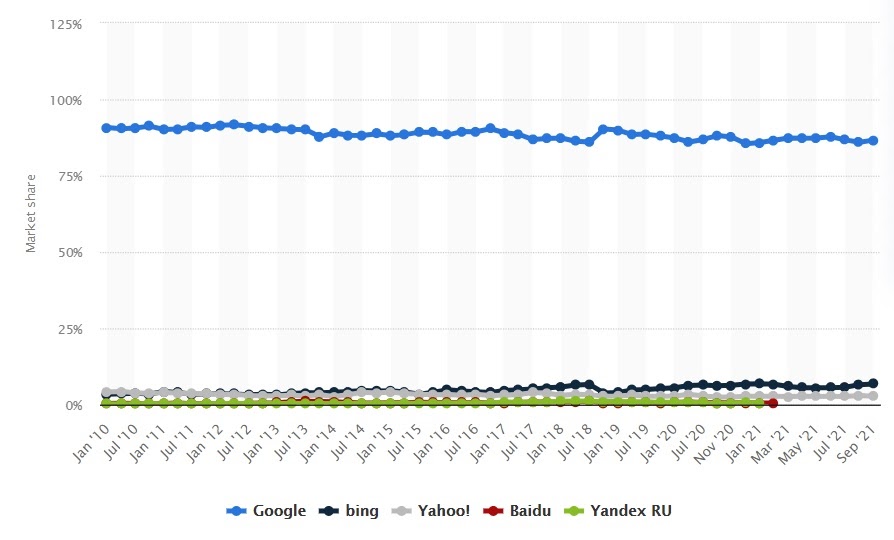
It’s important to understand that if you’re serious about SEO, your aim shouldn’t be to rank on the first page. It should be to take the top spot. Why?
Backlinko is arguably the best source for content marketing statistics related to SEO, so let’s look at their data.
The #1 search result has an average click-through rate (CTR) of 31.7%, meaning that it’s 10x more likely to get a click than the #10 search result.
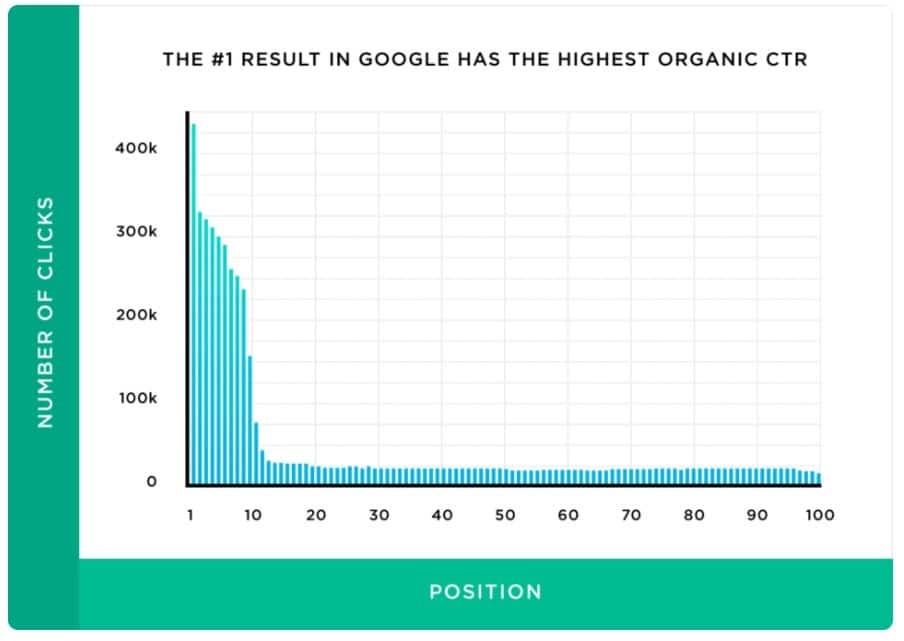
Also, if your content isn’t on the first page, it might as well not exist because only 0.78% of searchers click on something on the second page.
Look at the drop off after the first page:
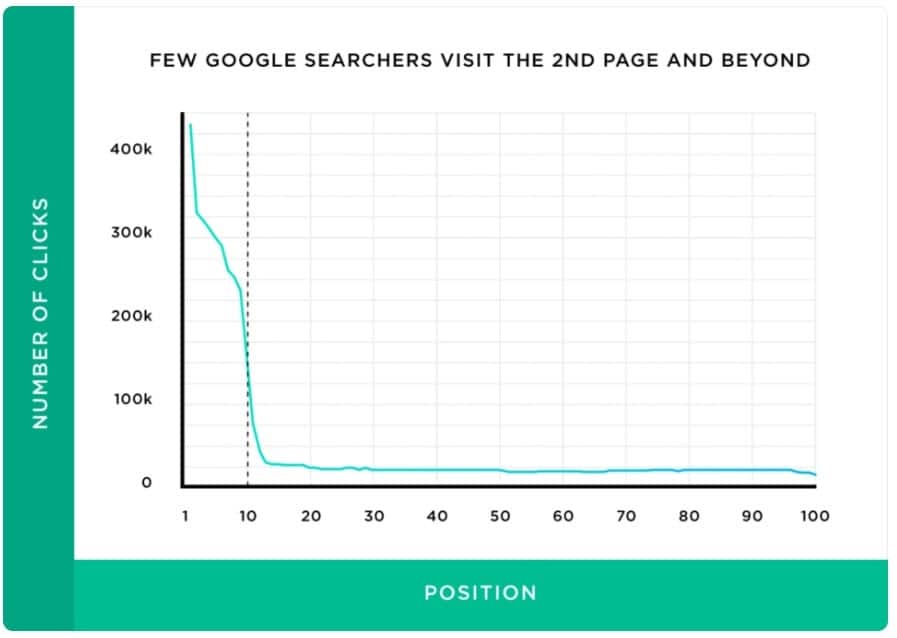
Ranking on the first page, much less getting to the top of it, is difficult because the competition is fierce. So how can you do it?
According to Backlinko, there are over 200 ranking factors, but in the SEO community, it’s widely believed that backlinks are the most important ones.
This claim is supported by research that shows that, on average, the #1 result has 3.8x more backlinks than results #2 – #10.
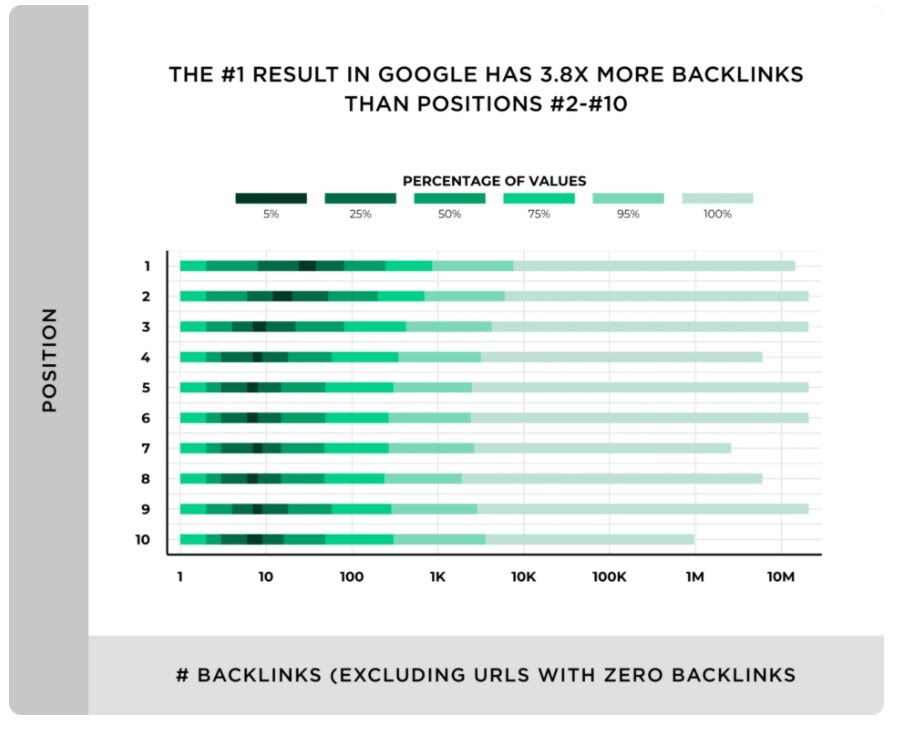
The quality of your written content matters as well, so you also need to create a better piece than anything that’s currently ranking for that keyword.
Google gives preference to long-form content. However, the average word count for the first-page search results is only 1,447 words, so there’s no need to pad your blog posts with fluff just to increase their length.
The word count appears to be distributed evenly between the first-page search results. While you might need to meet the average word count for that particular keyword, doubling or tripling probably won’t benefit rankings.
Remember that ultimately, your target audience is humans, not Google’s search algorithm.
That’s why you need to make sure that your content is readable, not just a search engine optimized word salad.
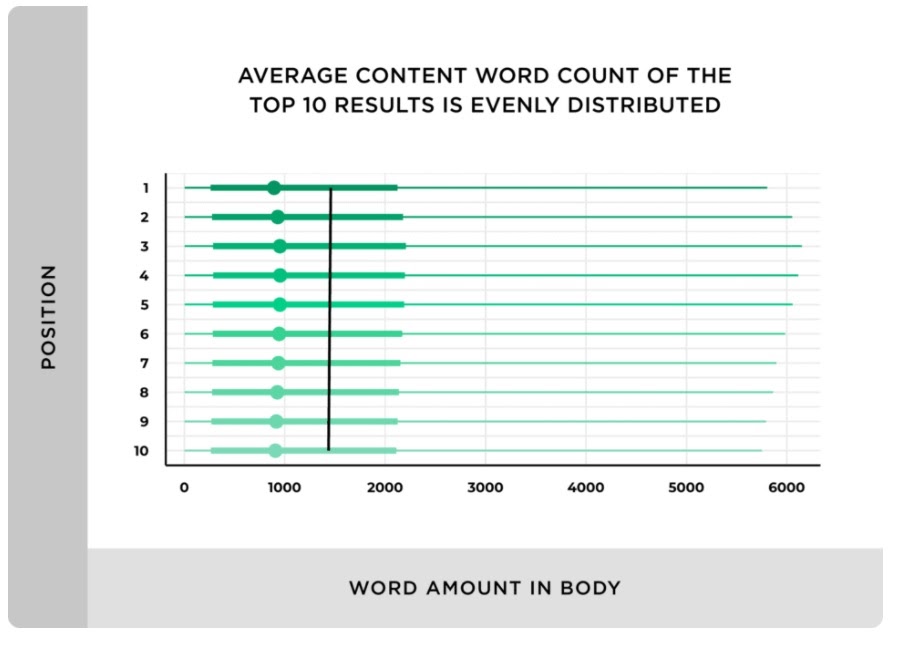
It’s also important to understand that if you want to be successful at SEO, you need to be super aggressive when link building. Simply creating engaging content isn’t enough anymore.
You can better understand what that might entail by reading Adam Enfroy’s article on link building.
Content Marketing Statistics: Email Marketing
When it comes to content marketing stats related to email marketing, DMA’s annual “Marketer Email Tracker” report is one of the most reputable resources out there.
According to 2020’s report, the average return for every £1 spent was £35.41, meaning the average email marketing ROI was an astounding 3541%.
Nearly half of the businesses (48%) surveyed focused on sales as their primary email marketing metric. Other popular metrics included click-throughs, conversions, and engagement, as well as brand awareness.
“Brand awareness” is an odd metric in this context. Not only is it too abstract to be useful, but also because someone who’s on a company’s email list is presumably already well-aware of that brand.
There also seemed to be a trend of spending an increasing percentage of the company’s overall marketing budget on email marketing. In 2018, it was just 10.9%, but in 2020 it was 18.9%. It’s a 73% increase in just a couple of years.
61% of marketers cited “budget/resources” as their primary email marketing challenge.
It’s worth noting that the term “resources” also included the skills that their marketing team possessed. Therefore it’s unclear what percentage of marketers had a marketing budget problem and what percentage had a skill shortage problem.
These content marketing stats seem to indicate that email marketing is probably the most effective form of content marketing there is, which is presumably why businesses are spending more and more money on it.
Going from freelance writing to email marketing might be the quickest way to transition into content marketing because the main skill you need to be successful is email copywriting.
That being said, if you want to not only sell to the client’s existing email subscribers but also help the client grow their email list, you’ll need to learn how to build an effective lead generation funnel and drive traffic to it.
Content Marketing Statistics: Video Marketing
Wyzowl is an excellent source for video content marketing statistics to learn how content marketers use this medium in their content marketing strategies.
According to their “State of Video Marketing 2024” report, 86% of businesses use video as a marketing tool.
The number of businesses doing that increased by 41% since 2024, which means that it nearly doubled in the last five years.
86% of video marketers also reported that video content had increased traffic to their websites, which shouldn’t be surprising. It typically involves tapping into the user bases of massive platforms such as YouTube.
Moreover, 84% of video marketers said that video content has helped them generate leads, with 78% saying that it has directly helped them increase sales.
When asked how they measured video content marketing success, 63% of marketers cited engagement, 58% cited reach, and 55% cited click-throughs and leads.
Only 29% of them said that bottom line sales were a factor in their evaluation.
YouTube, the largest video hosting platform in the world that has over 2.2 billion users, is the most popular platform when it comes to video content marketing.
However, 2020 was somewhat of a breakthrough year for TikTok, though only 20% of marketers used it for video content marketing (and just 67% of them considered it effective!).
The most effective video marketing channel was webinars, with 91% of webinar marketers saying that they’ve had success with it.
Overall, more than 99% of video marketers intended to continue using video marketing this year, with 89% of them planning to use YouTube.
Here’s a list of video marketing channels ranked by the percentage of marketers that intended to continue using them:
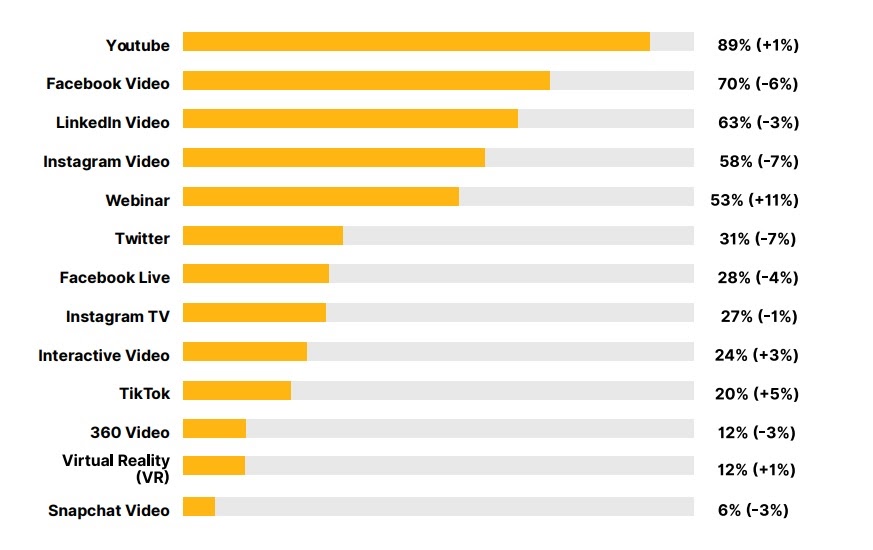
These video content marketing statistics seem to indicate that video content is here to stay. It makes sense to incorporate it into one’s content strategy.
However, the transition from freelance writing to video marketing is arguably the most complicated. You would need to learn to shoot and edit videos, write video scripts, speak in front of the camera, and more.
You might also need to invest a significant amount of money in equipment such as a professional camera, microphone, computer that can handle editing, video editing software, etc.
That’s why we recommend you to play around with shooting personal videos for YouTube with your phone first to see if you like it.
How To Get Started as a Content Marketer
Okay, so now that we have discussed various content marketing statistics, we hope that you have a better understanding of the content marketing landscape.
But what are the steps that you need to take to get into this industry?
1. Pick a Specialty
You can’t just be a “content marketer.” You need to specialize in something. It could be social media marketing, video marketing, SEO, whatever. It will allow you to position yourself as an expert. You don’t want to come across as a Jack of all trades, master of none.
2. Create a Successful Project
Once you have chosen an area you want to specialize in, you need to prove that you can produce results.
But it’s easy to get stuck in the catch-22 trap where you can’t get clients because you don’t have experience and can’t get experience because you can’t get clients. So how can you get around this?
Simple. Instead of waiting for someone to allow you to prove yourself, start your project to enable you to do that. It could mean amassing a following on a particular social media platform, building a niche website, creating a popular YouTube channel. Develop your content marketing strategy, then focus on executing it.
Having a successful personal project like that under your belt will help you stand out from hordes of self-proclaimed “content marketers” who have no content marketing experience to speak of.
3. Use That Successful Project to Get Client Work
Once you reach a certain level of success with your project, start reaching out to potential clients that might need something similar.
Then, once you start getting clients, focus on producing measurable results, especially sales, revenue, and profit.
Also, try to acquire as much social proof as possible as quickly as possible. Get testimonials, write up case studies, share wins on LinkedIn, etc. Then leverage that social proof to get more and better clients.
Conclusion
Should you become a content marketer?
That’s a question that only you can answer.
We encourage you to think about the pros and cons of going down that path. Are you willing to make those trade-offs?
Remember, freelance writing and content marketing can be great career options. It’s not like one is better than the other. They’re just different.
What matters is that you make a choice that’s right for you.

